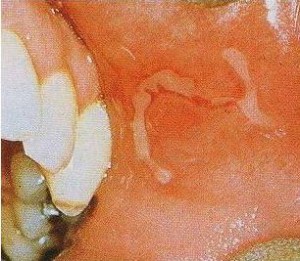Here two questions arise: (1) What is the shortest period when they may manifest themselves subsequently to the breaking out of the primary, protophathic symptoms? and (2) What is the longest period when the danger of secondary symptoms breaking out may still exist, even after the primary disease seemed to have been thoroughly eradicated? As regards the first question, when secondary phenomena may arise in the shortest time, it is certain, not only according to my own observations, but likewise those of all other physicians who have had opportunities of observing the course of the syphilitic disease, that they not only arise after the disappearance of the primary protopathic phenomena, but likewise while these phenomena are still running their course. Whatever may be said of the protection which a chancre or a various bubo affords against the breaking out of constitutional syphilis, there is unimpeachable testimony that this protection does not always exist. It is positively certain that, even if secondary symptoms very seldom manifest themselves during the primary ulcerative stage of chancre, if a chancre, without being treated with external ointments or astringents, is left to itself for six or seven only four weeks, or up to the period when it passes from the stage of primary ulceration into the state of fungoid growth, this transition period is simultaneously ushered in by the appearance of some cutaneous eruption, most generally syphilitic maculæ, and that such an event may take place, both when vicarious buboes are present or absent. Inasmuch as buboes, mucous tubercles, and figwarts, although in some rare cases they may occur as protopathic symptoms appertaining to the primary
 |
| snail track ulcers of secondary syphillis |
period of syphilis, in most cases do not make their appearance until the second term of the primary chancre, that of fungoid growth, has set in; and inasmuch as truly secondary phenomena may develop themselves during this terms, we cannot wonder if these consecutive products of the primary period, even at the very time when they first break out, superinduce, as immediate consequences, or are even accompanied by secondary cutaneous affections, or even affections of the mucous membranes. Moreover, inasmuch as more particularly mucous tubercles and figwarts, inspite of their inherent capacity to reproduce their like by infection, nevertheless, in consequence of the changes which their reproductive energies had undergone, belong to a stage where the original chancre virus had become pathologically altered, it must be evident that these last-mentioned phenomena, even when they seemingly occur as protopathic products, in many cases are followed by secondary phenomena more rapidly than the chancre itself, and may even be accompanied by them at the outset. The same remarks apply to syphilitic gonorrhoea, whether occasioned by the virus of chancre, tubercles, or figwarts; this kind of gonorrhoea is likewise very frequently and very speedily associated with secondary cutaneous affections, by which it can easily and safely be distinguished from common gonorrhoea, as a disease of much more dangerous consequences.